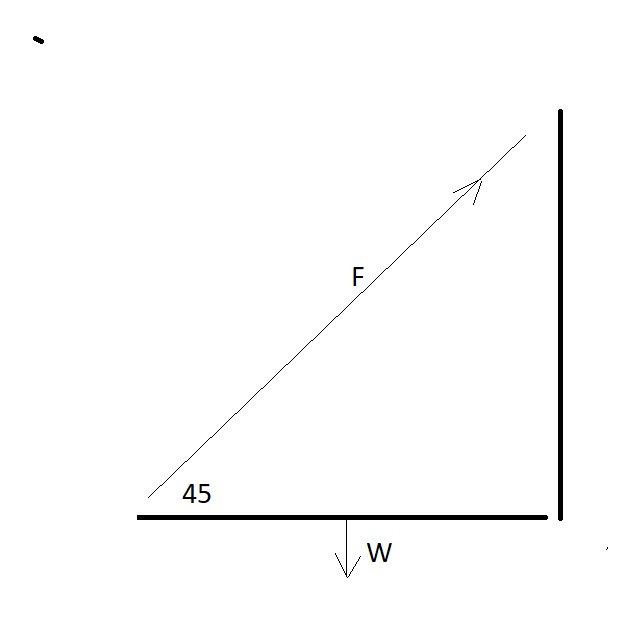Zachary asks: Why does one "lift" the mast off?
I struggled to understand your question, but I think I’ve got it now.
I think you are describing the scenario where the new mast is up and locked in position, and you are now disposing of the old mast. If the old mast is keel-stepped then obviously it needs to be lifted out before it can be taken away. Hence “lift”.
But I think now you are referring to the old mast being deck-stepped, and you want to know why it can’t be lowered down by its halyard from the new mast, masthead to masthead perhaps, with the old mast pivoting on its heel (and thereby carrying some of its own weight) until the point where it is fully lowered.
Good question.
By rough calculation I think the force F on the halyard required to do this will be at the maximum about 0.7 x W (W being the actual weight of the mast), assuming the two masts are of approximately equal length, and stepped very close to each other - and that maximum will occur when the old mast is in the horizontal position.

(W/2) / F = sin45 = .707 so F= approximately 0.7 x W
(Better get someone to check that, I’m getting a bit doddery in my old age.)
So doing it that way puts a bit less strain on the old halyard and its block – and quite a lot less during the early stages of lowering, though it does put more of a “side strain” on the halyard block fitting, and bending force on the top of both masts, and can only be done if there is a clear space right there, to take the length of the new mast when it is down.
On the other hand, if the old mast is lifted clear and then lowered, the weight on the halyard will be W, the full weight of the mast while it is off the ground, throughout the entire process – but the new mast will be then mainly only under compression, not so much bending - and as you say, it might be easier to do it that way to allow the crew to grab the bottom of the mast and swing it around before it is lowered, to get it to touch ground where you want it, if other objects are in the way or if space considerations dictate that. I suppose if the rigging screws are slacked off but not removed, you might have a chance to do a little "trial lift" before being totally committed - but I don't know if that would be practical in your situation or how much you could make of that as a safety precaution - its just a thought.
If I have understood your question correctly I think that is about all there is to it – more than anything else I think it is just a question of which way is the most practical. In either case do take care as you are still relying on the integrity of the old mast and its halyard and block. I have actually seen a mast fall and crash full length on the ground. Miraculously no-one was under it, and it fell neatly between two parked boats and wasn't even damaged as far as I could see. Its up to you to ensure that no-one is standing directly underneath its vertical path of descent if the halyard were to break, and that the path of descent is clear of your car and anything else of value, while you are lowering it, just in case something gives way. That requires a little bit of forethought, rather than “bravery pills”, and ensures that in that unlikely scenario the only thing damaged is the old mast.